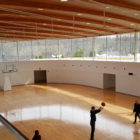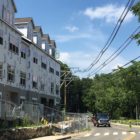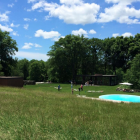Government
‘Protect Us from Turning into Greenwich’: P&Z Adopts More Flexible Regulations for Gates and Columns
|
Seeking more flexible and legally defensible rules, town officials last week voted to expand a section of the New Canaan Zoning Regulations that pertains to the allowable heights of gates and columns, such as those found at the ends of residential driveways. Until now, homeowners in any residential zone seeking to install fences or freestanding walls higher than four feet above finished grade—when in the front yard and located between the front property line and front yard setback line—applied to the Planning & Zoning Commission for a special permit to do so. The across-the-board rule, while ensuring that New Canaan’s larger residential zones don’t appear sealed from the public roadway in a cold and distant way, have brought on “a number of issues,” according to P&Z Chairman John Goodwin. “It just brings us to a point where we are trying to over-regulate a very difficult area,” Goodwin said during the group’s regular meeting on Jan. 31, held at Town Hall.




